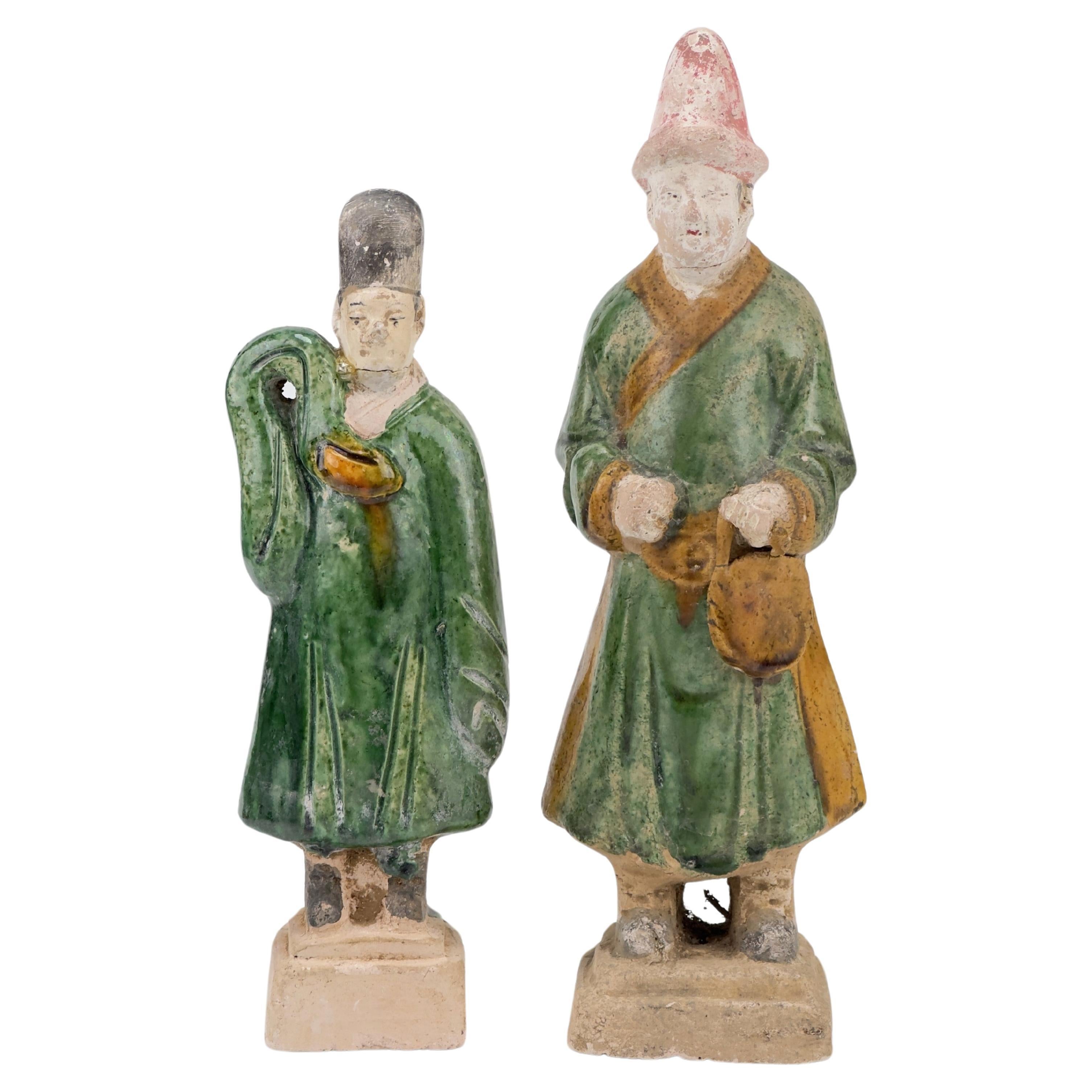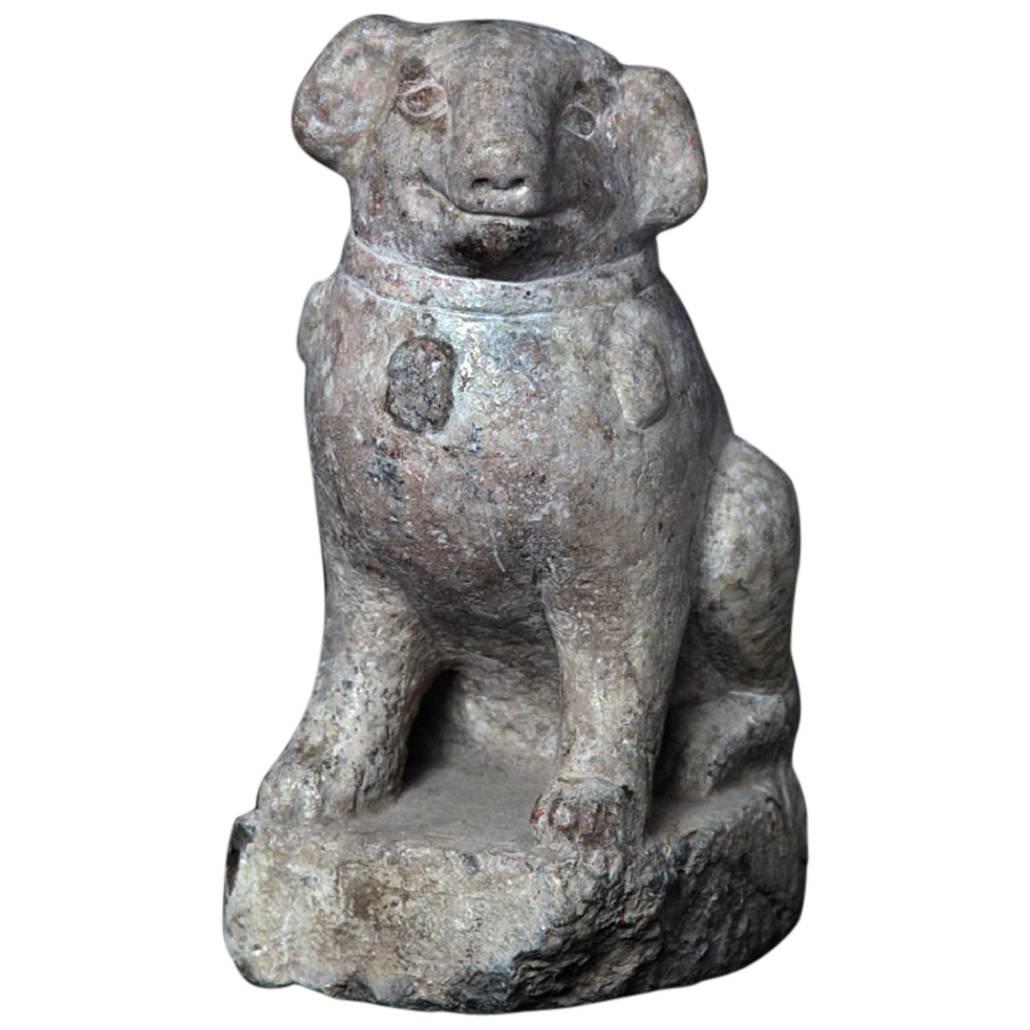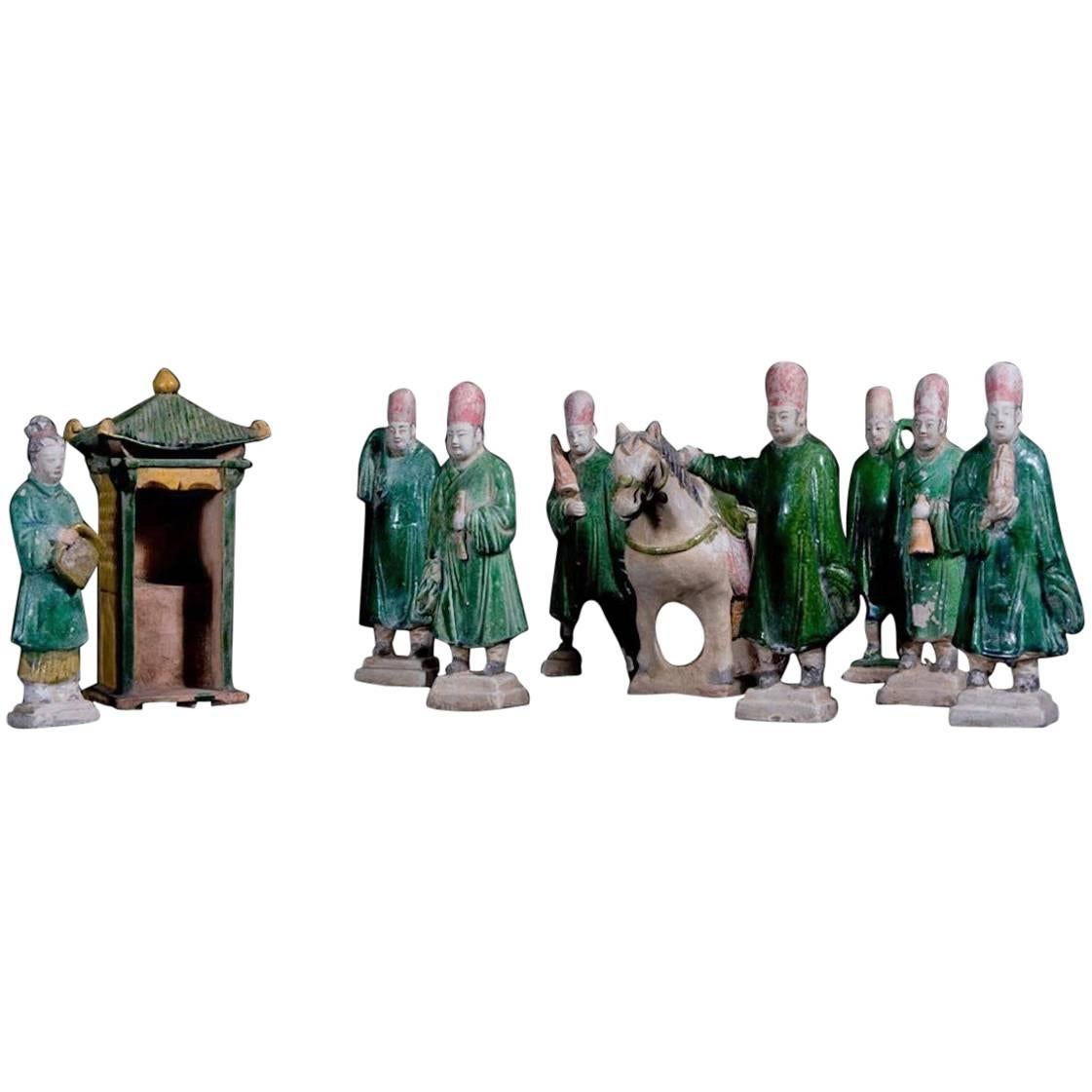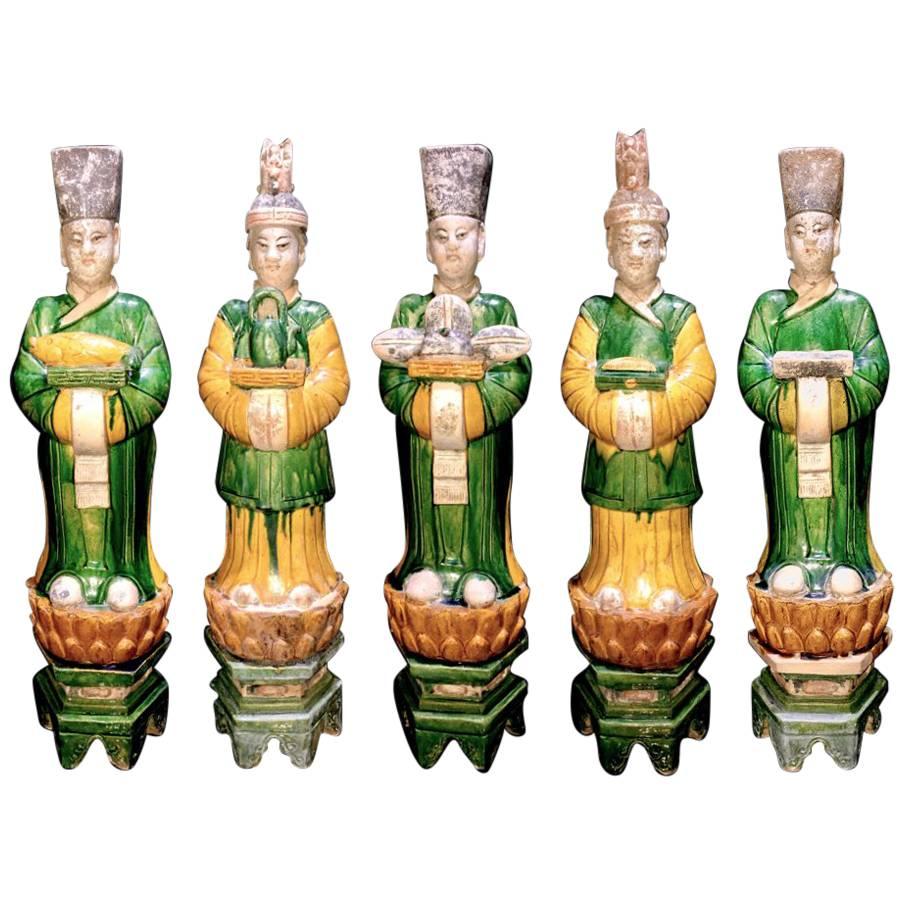Items Similar to Bixia Yuanjun Figure of Bronze Dated Ming Dynasty, 1368-1644
Want more images or videos?
Request additional images or videos from the seller
1 of 13
Bixia Yuanjun Figure of Bronze Dated Ming Dynasty, 1368-1644
About the Item
Bixia Yuanjun figure of bronze dated Ming Dynasty 1368-1644.
Base of hardwood.
Height excluding base 26cm;
Heigh including base 31cm.
Condition:
Corrosion on reverse/back;
Crown missing pieces;
Gilt worn off.
Provenance:
Brunn Rasmussen Auctioneers, Auction 727, Catalogue 1129.
Professor and author , Alex Wittendorff, 1932-2013, København.
- Dimensions:Height: 10.63 in (27 cm)Width: 5.91 in (15 cm)Depth: 3.55 in (9 cm)
- Style:Ming (Of the Period)
- Materials and Techniques:
- Place of Origin:
- Period:
- Date of Manufacture:1368-1644
- Condition:Wear consistent with age and use. Minor losses. Minor structural damages. Minor fading.
- Seller Location:London, GB
- Reference Number:1stDibs: LU6366230372662
About the Seller
No Reviews Yet
Vetted Seller
These experienced sellers undergo a comprehensive evaluation by our team of in-house experts.
1stDibs seller since 2022
Typical response time: 1 to 2 days
- ShippingRetrieving quote...Ships From: Windsor, United Kingdom
- Return PolicyA return for this item may be initiated within 14 days of delivery.
More From This SellerView All
- Shokudai Candle Holders of Bronze from Japan, Meiji 1868-1912Located in London, GBPair of Shokudai candle holders made of bronze during the Meiji period (1868-1912) in Japan. Includes original box as pictured. Candle holders H. 66cm; diameter 26cm. Lidded bro...Category
Antique Late 19th Century Japanese Meiji Antiquities
MaterialsBronze
- Shokudai Candle Holders of Wood from Japan, Meiji 1868-1912Located in London, GBPair of Shokudai candle holders made of stained wood during the Meiji period (1868-1912) in Japan. Includes original box as pictured. Candle holders H. 71 cm. Wooden box H. 25 ...Category
Antique Late 19th Century Japanese Meiji Antiquities
MaterialsSoftwood
- Jørgen Høvelskov: Competition entries, two boards of sketches of furniture 1966Located in London, GBTwo competition entries with sketches of various pieces of furniture. One named “skiftespor” - changing lanes. Made for the furniture competition in connection with the Copenhagen ca...Category
Vintage 1960s Danish Scandinavian Modern Drawings
MaterialsHardwood
- Set of 4 Niels Otto Moller 1964 Dining Chairs with Arms of TeakBy Niels Otto MøllerLocated in London, GBThis set of four teak dining chairs by Niels Otto Moller. Round label dates these chairs as made between 1964 and 1969. Chairs require new black leather, which is included in listing...Category
Vintage 1960s Danish Scandinavian Modern Dining Room Chairs
MaterialsTeak
- Set of 4 Kai Kristiansen chairsBy Schou Andersen Møbelfabrik, Kai KristiansenLocated in London, GBA fine set of 4 Kai Kristiansen dining chair in blue wool, probably reupholstered about 20 years ago. Some signs of use but no stains nor unsightly marks. The frames have a nice pati...Category
Vintage 1960s Danish Scandinavian Modern Dining Room Chairs
MaterialsWool
- Confonorm Bar Stool Made of BeechLocated in London, GBBar stools in the Style of the Marbella stool by Sergio Rodrigues.Category
Late 20th Century Spanish Brutalist Stools
MaterialsBeech
You May Also Like
- Bronze Figure of a Seated Luohan, Ming Dynasty, 1368-1644Located in Torino, ITCast seated wearing a simple robe with his right hand resting on the hilt of a snake-entwined sword, the left hand held aloft, his face with meditative expre...Category
Antique Early 1600s Chinese Ming Sculptures
MaterialsBronze
- Longquan Celadon Figurine, Ming Dynasty (1368-1644)Located in seoul, KRThis sculpture is a Longquan celadon from the Ming Dynasty, renowned for its rich and jade-like green glaze. The figurine is likely a representation of a Buddhist deity or a revered scholar, showcasing the calm aesthetic expressions and graceful contours prevalent during the era. The spectrum of celadon glaze ranges from a dense grey stoneware to a nearly white porcelain texture, with unglazed parts revealing a terracotta brown upon firing. Such pieces were often part of household altars, reflecting the era's spiritual devotion. This artifact would be a treasured exhibit in any museum's Asian art collection, symbolizing both religious reverence and artistic excellence. Period: Ming Dynasty (1368-1644) Region: Longquan, China Medium: Stoneware - Celadon glazed, with a range from heavy grey to almost white porcelain-like material Type: Sculpture Height : 24.5 cm Provenance : Acquired in 1999, Hongkong * Ming Dynasty Longquan Celadon Longquan celadon from the Ming Dynasty typically exhibits a more robust and heavier stoneware body compared to its Song Dynasty predecessors. The Ming era saw an evolution in celadon glaze, achieving a wider spectrum of green hues, from olive to bluish-greens. Ming celadons...Category
Antique 15th Century and Earlier Chinese Ming Antiquities
MaterialsCeladon
- Two green glazed figures, Ming dynasty (1368-1644)Located in seoul, KRStatues of Chinese dignitaries crafted from terracotta, featuring glazes in green and ocher, are set on rectangular bases. The wide-sleeved robes and craftsmanship, along with the cy...Category
Antique 15th Century and Earlier Chinese Ming Antiquities
MaterialsPottery
- Important Ancient Chinese Effigy Pug Dog, Ming Dynasty 1368-1644Located in South Burlington, VTChina, a carving of a canine “Pug”, Ming Dynasty, 1368-1644 CE Dimensions: 38 cm, 15” High Photographs taken indoors and out of doors for your viewing pleasure. The hand carved limestone beast shown on its haunches with naturalistic joyful expression and a well defined compact head, ears, noes, eyes, feet, and tail parted to one side on reverse with distinctive collar ornament seated four square on a thick base all-over showing a weathered surface from significant age. Formerly exhibited “Asia Week” New York City, Fuller Building, Hutton Gallery 2006. Provenance: ex collection luoyang, Henan Province, China. Includes custom display base as shown Catalog reference: 35 years collecting 35 treasures, Number 35, p.76 (photo) In ancient China, it is a well-known fact that several types of small dogs were bred and were favored pet gifts between emperors and kings including Lion Dogs, Pekingese and Lo-sze breeds. Some Lo-sze are pictured wearing collars with bells a frequent combination fancied by European royalty of the seventeenth and eighteenth centuries. Lo-sze or pugs were prized for their compact body, good bones, flat face, square jaw, short coat, curled tail, side set back ears, and temperate disposition. History: Placing stone animals in important tombs can be traced back at least to the Qin Dynasty (221-206 BCE), some two thousand years ago. In ancient times, stone animals and human figures placed before imperial tombs symbolized royal power and privilege in addition to decorative functions. The first Ming tomb...Category
Antique 15th Century and Earlier Chinese Ming Sculptures and Carvings
MaterialsLimestone
- Impressive Terracotta Funerary Procession - Ming Dynasty, China '1368-1644 AD'Located in San Pedro Garza Garcia, Nuevo LeonImpressive Funeral Ensamble of 10 Terracotta Glazed Figures in green and caramel colors depicting a votive procession with a palanquin, his four carriers, a horse, a stableman, two musicians, and an offering carrier. This ensemble is accompanied by a Certificate of Authenticity, and Certificate of Expertise by Jean-Yves Nathan - Specialist in Asian Arts for the CEDEA (The European Confederation of Art Experts). Burial figurines of graceful dancers, mystical beasts, and everyday objects reveal both how people in early China approached death and how they lived. Since people viewed the afterlife as an extension of worldly life, these figurines, called mingqi, sometimes referred as “spirit utensils” or “vessels of ghosts” disclose details of routine existence and provide insights into belief systems over a thousand-year period. The Ming dynasty was the ruling dynasty of China – then known as the Empire of the Great Ming – for 276 years (1368–1644 AD). Founded by Chu Yuan-chang, the rebel leader that was successful in removing the mongols from the throne. Chinese control was re-asserted in China and eastern Asia. Literature became more important, schools were created, and the justice system was reformed. The Ming dynasty is described by some as "one of the greatest eras of orderly government and social stability in human history,” was the last imperial dynasty in China ruled by ethnic Han Chinese. The practice of burying ceramic objects with the deceased went into decline from the 10th to the 14th Century AD. There was a revival in placing miniature representations of glazed terracotta objects such a furniture, food offerings, horses, miniature statues...Category
Antique 15th Century and Earlier Chinese Ming Antiquities
MaterialsTerracotta
- Superb Set of 5 Elegant Court Attendants, Ming Dynasty, 1368-1644 AD TL TestedLocated in San Pedro Garza Garcia, Nuevo LeonA stunning set of 5 graceful terracotta figurines from the Ming Dynasty '1368-1644' AD. These elegant attendants are standing on a yellow glazed lotus flower over a high hexagonal green plinth and wear fine robes in matching green and yellow glazes. The unglazed areas have pigmented colors in red, black and white. Each is carrying essential offerings for the royal family. The head is detachable as often seen on the larger figures from this period. Meticulously detailed facial expressions have been hand-painted. Condition: Mint, finely preserved glaze and pigment, undamaged and no repairs. Provenance: Ex. Danish Collection. This set is guaranteed authentic and comes with a Certificate of Authenticity and TL Test from Laboratory Kotalla in Germany (The Oldest Thermoluminescence Testing Laboratory in the World). Dimensions: Average 54 H cms Burial figurines of graceful dancers, mystical beasts, and everyday objects reveal both how people in early China approached death and how they lived. Since people viewed the afterlife as an extension of worldly life, these figurines, called mingqi, sometimes referred as “spirit utensils” or “vessels of ghosts” disclose details of routine existence and provide insights into belief systems over a thousand-year period. The Ming dynasty was the ruling dynasty of China – then known as the Empire of the Great Ming – for 276 years (1368–1644 AD). Founded by Chu Yuan-chang, the rebel leader that was successful in removing the mongols from the throne. Chinese control was re-asserted in China and eastern Asia. Literature became more important, schools were created, and the justice system was reformed. The Ming dynasty is described by some as "one of the greatest eras of orderly government and social stability in human history,” was the last imperial dynasty in China ruled by ethnic Han Chinese. The practice of burying ceramic objects with the deceased went into decline from the 10th to the 14th Century AD. There was a revival in placing miniature representations of glazed terracotta objects such a furniture, food offerings, horses, miniature statues...Category
Antique 15th Century and Earlier Chinese Ming Antiquities
MaterialsTerracotta





